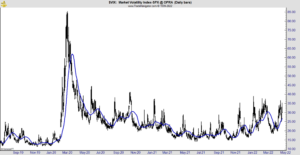Mike wrote to you yesterday with a bold claim: Every bubble in the entirety of human history has started with greed.
I’ll see that claim, and raise another…
All bubbles end when investors give in to fear.
There have been dozens, maybe even hundreds of bubbles since the Dutch first traded tulips about 400 years ago. And they all burst for this very reason.
The 1920s Florida Land Boom was no exception.
Let’s revisit it to see how fear pops bubbles to drive prices down — and how knowing this can give you an edge in the market today…
THE SUPPLY CHAIN MESS OF 1925
The Florida bubble began like all bubbles do: with a sound investment opportunity.
Savvy investors took advantage of new demand for Florida land. But soon, greed pushed prices to irrational extremes.
The end was also predictable. Fear pushed prices down and popped the bubble.
See, the boom depended on building new homes. Demand from new residents fueled the bubble. Prices moved up as long as people moved to Florida. And it seemed like the stream of new buyers would never end.
All went well until the railroads shut down the flow of building supplies. There were just a few rail lines into the state, and food and other necessities competed for space with building materials.
Railroads prioritized the goods that were needed to sustain the population rather than continuing to support growth.
Supplies still moved by sea for a few months — until a large ship sunk in the Miami harbor and shut that mode of transport down.
Landowners saw this and realized they were isolated. They began to panic, and the boom turned to bust.
In other bubbles, investors tend to keep buying as bad news mounts. They buy the dip and argue about facts, until the price decline becomes too large to ignore.
Then they panic, and their fear drives rapid price declines.
[Exclusive: Daymond John, “The People's Shark,” reveals where he's investing]
But in 1925, prices were still rising when investors noticed the supply chain problem. Their fear created the decline.
Regardless of the timing, this bubble ended for the same reason all bubbles do: fear.
I’ve spent years studying fear and thinking about its impact on prices. And it’s led me to realize that most investors are looking at it all wrong…
THIS IS NOT A TIME FOR FEAR…
In my research, I saw that investors look for spikes in fear during market declines. They use this to confirm the decline. Take a look at the chart below of the CBOE Volatility Index (VIX)

Source: banyanhill.com
The black line is the VIX, the most common way to measure fear in the stock market. There are frequent spikes and rapid declines, which leads many to believe that fear is a short-term emotion.
But they’re wrong. There are clear trends in fear.
[“The People's Shark” is Helping Everyday Americans Discover the Next Huge Startup]
These are shown by the blue line in the chart, which is the 20-day moving average of VIX.
I’ve found these trends are more important than the spikes for short-term traders.
In February 2020, the moving average turned up. Stocks were peaking then. But we didn’t know a bear market was just days away.
VIX peaked in March 2020, but it remained above its pre-pandemic level until March 2021. By that time, most of the bear market had already occurred.
If you were making trading decisions based on a high VIX, you would’ve stayed out of the market for the entire post-pandemic recovery.
That’s why I say most investors look at fear the wrong way. The VIX, by itself, is not a tradable way to measure risk in the stock market.
We only know that VIX was high in hindsight. In real time, we don’t know when the VIX has peaked. If we wait for it to fall back to previous lows, we miss big gains like we saw in 2020.
Adding an MA to the index helps make it useful. The MA provides a timing signal. When the VIX is above the MA, fear is rising and prices are falling. You want to avoid that, and buy stocks when it’s below the MA instead.
But even with this, I don’t like to rely on the VIX for trade signals. There are more powerful ways to measure the ebb and flow of fear in the market, and in individual stocks.
Right now, fear is rising. That tells me the market is heading down…
It won’t go straight down. But it will keep falling until fear gives way to greed once again.
However, it’s important to remember that fear always subsides in time. Land in Miami today is worth far more than it was in 1925. But speculators in 1925 let fear blind them to the long-term potential.
I expect traders in the stock market to become blinded by fear in the next few months.
I hope you won’t join them in panicking. I hope you’ll follow your indicators, and trade the market based on facts rather than emotions.
Regards,
Amber Hestla
Senior Analyst, True Options Masters
P.S. Mike Carr has just finished an indicator that accurately measures both fear AND greed. It tells you exactly when sentiment is turning, and fear/selling has given way to greed/buying.
These indicators can work incredibly well when emotions are at extremes. This is not a time to be scared. It’s a time of great opportunity.
[Daymond John: America’s Comeback Summit – “I’m Investing 100K in This”]
